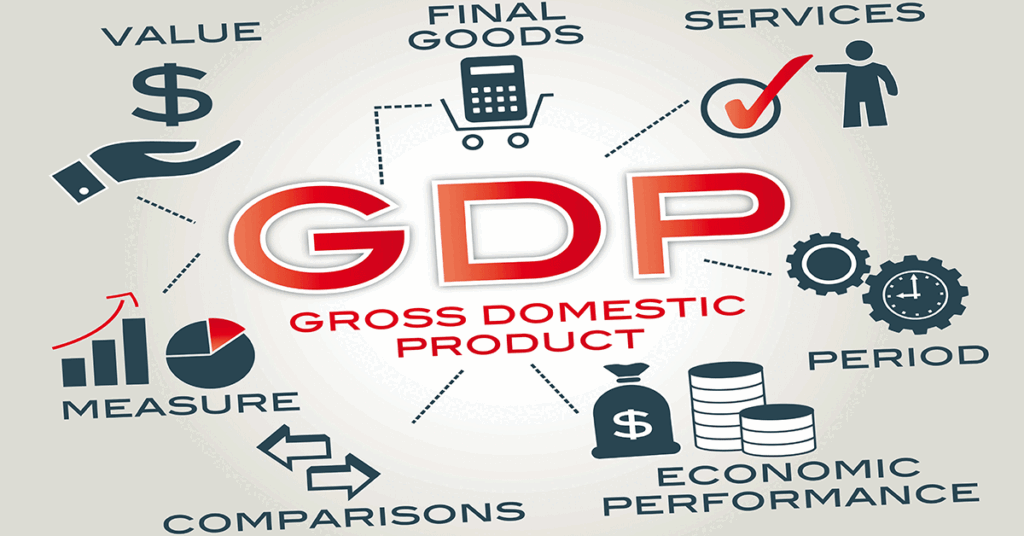Understanding Gross Domestic Product (GDP) and Its Benefits to a Country

Introduction
Gross Domestic Product, or GDP, is a crucial economic indicator that measures the overall economic performance and health of a country. It serves as a fundamental tool for policymakers, economists, and businesses to understand the size and growth of a nation’s economy. This article explores what GDP is and discusses how it benefits a country’s economy and its citizens.
What is the Gross Domestic Product (GDP)?
Gross Domestic Product (GDP) is a comprehensive measure of the economic activity within a country’s borders over a specified period, typically a year or a quarter. It accounts for the total value of all goods and services produced and consumed within a nation, encompassing everything from manufacturing and construction to services like healthcare and entertainment.
GDP can be calculated in three primary ways:
- Production Approach: This approach sums up the value of all goods and services produced in the country.
- Income Approach: It calculates GDP by adding up all income earned by residents and businesses in the country, including wages, rents, interest, and profits.
- Expenditure Approach: This method adds up all spending within the economy, including consumer spending, business investments, government spending, and net exports (exports minus imports).
Benefits of GDP to a Country
- Economic Performance Measurement: GDP is a yardstick that helps assess the economic performance of a nation over time. It allows for comparisons of economic growth across countries and regions, enabling policymakers to make informed decisions based on their country’s economic health.
- Standard of Living: A higher GDP typically correlates with an improved standard of living. When GDP per capita (total GDP divided by the population) increases, people tend to have more disposable income, better access to services, and an improved quality of life.
- Resource Allocation: GDP aids in resource allocation by highlighting which sectors of the economy are growing or contracting. This information helps businesses and investors make informed decisions on where to invest or expand, ultimately contributing to economic growth.
- Government Revenue: Governments use GDP to assess their tax revenues. A growing GDP often results in increased tax revenue, which can then be used for public services, infrastructure development, and social welfare programs.
- Policy Formulation: Policymakers rely on GDP data to create economic policies and strategies. By understanding how the economy is performing, they can tailor policies to address issues such as inflation, unemployment, and economic stability.
- Trade and Diplomacy: GDP plays a role in international relations and trade agreements. Countries with robust economies, as indicated by a high GDP, often have more negotiating power on the global stage.
- Investor Confidence: Investors, both domestic and foreign, use GDP figures to evaluate the attractiveness of a country’s investment climate. A growing economy is generally seen as a more stable and profitable environment for investments.
Conclusion
Gross Domestic Product (GDP) is more than just a statistical figure; it’s a crucial economic indicator that impacts various aspects of a country’s economic and social landscape. By tracking and understanding GDP, governments, businesses, and citizens can make informed decisions to foster economic growth, improve living standards, and create a more prosperous future. GDP serves as a cornerstone for economic policy, resource allocation, and international relations, making it an indispensable tool in today’s interconnected global economy.
Interpreting Pakistan’s Gross Domestic Product (GDP) Data for 3 Years
The provided data outlines the Gross Domestic Product (GDP) of Pakistan for the years 2020-21 (Actual), 2021-22 (Revised), and 2022-23 (Projected). The figures are presented in millions of Pakistani Rupees (Rs. Million) and are segmented into various sectors and components. Let’s break down and interpret the data.
- Commodity Producing Sectors (A+B):
- 2020-21: 15,359,479 million Rs.
- 2021-22: 16,192,872 million Rs.
- 2022-23: 16,111,029 million Rs.
This segment combines both the Agricultural Sector (A) and the Industrial Sector (B).
- Agricultural Sector:
- 2020-21: 8,424,041 million Rs.
- 2021-22: 8,783,832 million Rs.
- 2022-23: 8,919,979 million Rs.
- Crops, Livestock, Forestry, and Fishing are the four components of this sector.
- Industrial Sector:
- 2020-21: 6,935,438 million Rs.
- 2021-22: 7,409,040 million Rs.
- 2022-23: 7,191,050 million Rs.
- This sector comprises Mining and Quarrying, Manufacturing, Electricity, Gas and Water supply, and Construction.
- Services Sectors (1 to 10):
- 2020-21: 21,223,003 million Rs.
- 2021-22: 22,622,116 million Rs.
- 2022-23: 22,816,361 million Rs.
- This is the largest segment, encompassing ten sub-sectors, including Wholesale and retail trade, Transport, Information and Communication, and Education.
- GDP (Total of GVA at basic prices (A+B+C)):
- 2020-21: 36,582,482 million Rs.
- 2021-22: 38,814,988 million Rs.
- 2022-23: 38,927,390 million Rs.
- This represents the total Gross Value Added in the economy.
- Taxes and Subsidies:
- Taxes (2020-21 to 2022-23): 2,894,190 million Rs., 2,906,476 million Rs., 3,089,131 million Rs.
- Subsidies (2020-21 to 2022-23): 375,056 million Rs., 779,803 million Rs., 384,023 million Rs.
- Taxes and subsidies are essential elements in the GDP calculation, affecting the overall GDP figure.
- GDP (GVA+Taxes – Subsidies):
- 2020-21: 39,101,616 million Rs.
- 2021-22: 40,941,661 million Rs.
- 2022-23: 41,632,498 million Rs.
- This reflects the GDP after accounting for taxes and subsidies.
- Net Primary Income (NPI):
- 2020-21: 3,275,406 million Rs.
- 2021-22: 2,806,550 million Rs.
- 2022-23: 2,729,639 million Rs.
- NPI accounts for income earned from abroad, such as remittances and foreign investments.
- Gross National Income (GNI):
- 2020-21: 42,377,022 million Rs.
- 2021-22: 43,748,211 million Rs.
- 2022-23: 44,362,137 million Rs.
- GNI is the total income earned by a country’s residents, including income from abroad.
- GDP (at Current Market Prices):
- 2020-21: 55,836,225 million Rs.
- 2021-22: 66,623,564 million Rs.
- 2022-23: 84,657,809 million Rs.
- This is the total GDP calculated at current market prices.
These figures provide a comprehensive view of Pakistan’s economic performance and growth in different sectors over the specified years. The data is invaluable for policymakers, businesses, and analysts to assess the country’s economic health, plan for the future, and make informed decisions regarding investments and economic policies. Keep in mind that GDP figures are subject to revisions and updates as more data becomes available, so it’s important to refer to the latest official sources for the most accurate and current information.





It’s appropriate time to make a few plans for the future and it’s time to be happy.
I have learn this publish and if I may I want to recommend you few attention-grabbing things or suggestions.
Perhaps you could write subsequent articles
referring to this article. I desire to learn more things approximately it!
Its like you read my mind You appear to know a lot about this like you wrote the book in it or something I think that you could do with some pics to drive the message home a little bit but instead of that this is fantastic blog An excellent read I will certainly be back